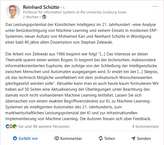Einzelansicht
Do., 20. Mai 2021 Busch, Jan
Journal-Artikel zur Wahrnehmung von eCommerce-Webseiten aus dem IIS fNIRS Lab publiziert
Wir freuen uns eine weitere Publikation aus unserem IIS fNIRS Lab zu verkünden: Anika Nissen und Caspar Krampe’s „Why he buys it and she doesn’t“-Paper wurde im Journal „Computers in Human Behavior“ akzeptiert. Im folgenden bekommt ihr erste Einblicke, worum es in dem Beitrag geht.
Why he buys it and she doesn't – Exploring self-reported and neural gender differences in the perception of eCommerce websites
Studies of gender-related differences in the perception of ecommerce websites dependent on the websites' aesthetics, usefulness, ease of use, and purchase intentions, give contradictory results. To shed light on these conflicting findings, in addition to self-reported data from two online questionnaires (Study 1 & Study 2), our research uses the neuroimaging method of functional near-infrared spectroscopy to explore possible gender-related differences (Study 3). By conducting three studies, users’ conscious and unconscious (neural) evaluations of ecommerce websites are explored. The self-reported results reveal that men and women do not significantly differ in their expressed evaluations of ecommerce websites. However, the neural results indicate that gender-related differences in the perception of ecommerce websites are influenced by unconscious effects, which might explain the inconsistent gender-specific research findings. Men tend to require greater neural activity when using ecommerce websites. Websites evaluated as useful and visually aesthetic lead to significant neural activation in brain regions of the left hemisphere for men in comparison to women, whereas websites evaluated as less useful and appealing reveal neural activation in brain regions of the right hemisphere in male participants. The results provide several theoretical and practical implications for the evaluation of gender-specific decision making on ecommerce websites.
Wenn ihr den vollen Beitrag lesen wollten, findet ihr ihn unter folgender Adresse: https://www.sciencedirect.com/science/article/abs/pii/S0747563221001321?via%3Dihub
Aktuelles:
 IIS-Publikation im "Journal Behaviour & Information Technology"14.10.25
IIS-Publikation im "Journal Behaviour & Information Technology"14.10.25 IIS-Publikationen auf der WI 2025 23.09.25
IIS-Publikationen auf der WI 2025 23.09.25 IIS-Publikation in der Festschrift für Prof. Dr. Zelewski: "Produktions- und Informationsmanagement"05.03.25
IIS-Publikation in der Festschrift für Prof. Dr. Zelewski: "Produktions- und Informationsmanagement"05.03.25 IIS-Talents: Erfahrungsberichte zum Event bei mindsquare09.05.23
IIS-Talents: Erfahrungsberichte zum Event bei mindsquare09.05.23- IIS-Talents: Das sind unsere Events für das Sommersemester 2023!25.04.23
 IIS-Publikationen auf der ECIS 2023 angenommen24.04.23
IIS-Publikationen auf der ECIS 2023 angenommen24.04.23 Zwei SHKs für die Unterstützung eines innovativen Lehrkonzepts gesucht! 18.04.23
Zwei SHKs für die Unterstützung eines innovativen Lehrkonzepts gesucht! 18.04.23 IIS-Publikationen auf der ECIS 2023 angenommen17.04.23
IIS-Publikationen auf der ECIS 2023 angenommen17.04.23 IIS-Talents SS 2023 - jetzt bewerben!11.04.23
IIS-Talents SS 2023 - jetzt bewerben!11.04.23 IIS-Talents: Abschlussevent beim Zeche Zollverein Essen23.03.23
IIS-Talents: Abschlussevent beim Zeche Zollverein Essen23.03.23


